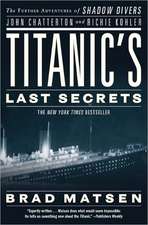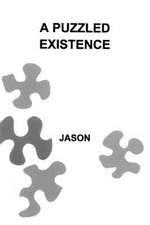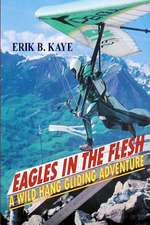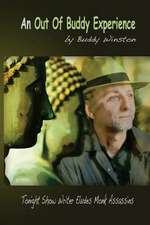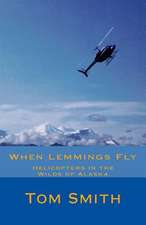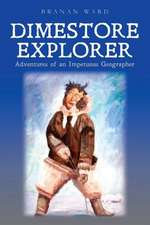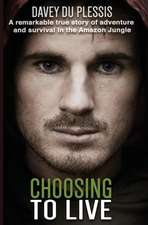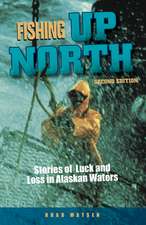Jacques Cousteau: The Sea King
Autor Bradford Matsen, Brad Matsenen Limba Engleză Paperback – 30 sep 2010
Inventor of the aqualung and fearless scuba diver, Jacques Cousteau opened up the ocean to a mass audience for the first time. Here, with the cooperation of many of the subjects closest confidants and family, Brad Matsen makes clear the full picture of his remarkable life, showing the father, military man, inventor, entrepreneur, and adventurer behind the public face. Vividly conveying the people, the science, and the lure of the sea that shaped Cousteau's life, Matsen paints a luminous portrait of a man who profoundly changed the way we live on our planet.
Preț: 109.73 lei
Nou
Puncte Express: 165
Preț estimativ în valută:
20.100€ • 21.98$ • 17.37£
20.100€ • 21.98$ • 17.37£
Carte disponibilă
Livrare economică 17-31 martie
Preluare comenzi: 021 569.72.76
Specificații
ISBN-13: 9780307275424
ISBN-10: 0307275426
Pagini: 320
Ilustrații: 28 PHOTOGRAPHS
Dimensiuni: 147 x 203 x 16 mm
Greutate: 0.3 kg
Editura: Vintage Publishing
ISBN-10: 0307275426
Pagini: 320
Ilustrații: 28 PHOTOGRAPHS
Dimensiuni: 147 x 203 x 16 mm
Greutate: 0.3 kg
Editura: Vintage Publishing
Notă biografică
BRAD MATSEN is the author of Titanic’s Last Secrets, Descent: The Heroic Discovery of the Abyss, and many other books about the sea and its inhabitants. He was a creative producer for the television series The Shape of Life, and his articles on marine science and the environment have appeared in Mother Jones, Audubon, and Natural History, among other publications. He lives on Vashon Island, off the coast of Washington State.
Extras
1
La Bergère
Marriage is absolutely archaic. It is a device people use to avoid facing the fact that we are all solitary and perishable.
Jacques Cousteau
Jacques Cousteau met Simone Melchior at her family's Paris apartment in the summer of 1936. She was seventeen, the daughter and granddaughter of French admirals, born on January 19, 1919, in Oran, Algeria. Until she was five years old, her family lived in Toulon, the home port of the Mediterranean fleet, then moved to Japan, where her father was a diplomatic attaché. By the time the Melchiors returned to France, Simone was a teenager fluent in Japanese and infected with wanderlust. Though her horizons were limited by her gender, she was a lycée student whose interests went far beyond keeping a house. She would later say that her dreams always included the sea.
The soirée at which Cousteau met Simone was one of many hosted by Marguerite Melchior to introduce her daughter to eligible navy men. Cousteau was fixed on Simone from the moment he walked in the door. Feigning indifference, he registered a stunning, compact young woman with flaxen hair, high cheekbones, and a seductive mélange of amusement and confidence in her alert green eyes. For her part, Simone quickly picked out the animated, wiry young man holding a movie camera of all things, not something she expected at one of her mother's parties. He was obviously navy, judging by his posture, but dressed in civilian clothes. She was instantly enchanted by his presence, a delightful blend of curiosity, delight, and confidence, and she liked the way he brashly panned his camera around the roomful of people holding cocktail glasses and chattering. He had a long, rural face, deeply etched by lines in his forehead pointing down to a long, sharp nose. Another set of concentric arcs wrinkled each side of his mouth, emphasizing a dazzling smile that he seemed to measure out for effect. As he wound the camera with its little silver handle, he moved his arms as though they hurt him. Simone's father easily noticed his daughter's interest in the officer with the camera, led him across the room to her, and introduced Ensign Jacques-Yves Cousteau. Admiral Melchior added that Cousteau was an aviation cadet living in Paris with his family while recuperating from injuries suffered in an automobile accident.
Cousteau took over the conversation, explaining the accident to Simone as though telling an adventure story in which he was simply a character swept along by events beyond his control. Five months earlier, he was just about to graduate from flight school when he borrowed his father's Salmson sports car to go to a friend's wedding in the hills west of Bordeaux, where he was based. The Salmson was fast and nimble, but when the headlights suddenly dimmed on a hairpin curve, he careered off the road into the darkness and blacked out. Only the luck of a farm truck on the otherwise deserted mountain road saved his life. Cousteau regained consciousness in the hospital with twelve broken bones and a paralyzed right arm. His doctor told him that his arm was numb because it was infected and probably should be amputated. Cousteau refused amputation. He would rather die than live as a one-armed man. A few days later, the infection resolved itself and his bones began to heal. After months of physical therapy, Cousteau was out of plaster and walking around, but he was in constant pain. He was finished as an aviator, and though he could not know it at the time he was again very lucky. Every man in his flying class would be killed during the first few weeks of the war with Germany that was three years away.
Cousteau, at twenty-six, was nine years older than Simone, and he had already sailed around the world—with his camera—on the training ship Jeanne d'Arc. Flying airplanes had been one of three possible life courses Cousteau had ceremoniously announced to his family as a boy. His other two choices were being a film director or becoming a medical doctor. Now, he was not at all sure of his future. Cousteau had been a curious but anxious boy who had become a man in love with impulse and driving fast cars on mountain roads. The rural face Simone had noticed right away was a true compass to his beginnings. He was born in St.-André-de-Cubzac, an ancient village at the confluence of the Dordogne and Garonne rivers, which form the Gironde Estuary that flows into the Atlantic Ocean 100 kilometers to the northwest. The first traces of habitation of the fertile, temperate hillsides are shards and bone fragments more than ten thousand years old, evidence of seasonal encampments of nomadic bands foraging in the north after the last ice age. The Pax Romana had reached the Gironde two thousand years ago, creating the city now called Bordeaux with the profits from sugar, tobacco, indigo, cotton, ebony, cocoa, coffee, slaves, and oysters exported to the rest of the Roman Empire. When the wild oysters grew scarce, the Romans figured out how to raise them in sea farms from spat on discarded shells, a method still unchanged by time. Soon after they arrived, the Romans planted grapevines and made wine that would forever after define the place. The English took over Bordeaux in the twelfth century when Louis VII's divorced wife, Eleanor of Aquitaine, married the Plantagenet king Henry II. Their kin ruled the region for three hundred years, as the wines of the magnificent, fertile valleys—called Bordeaux by the French and claret by the English—flowed by the shipload from convenient docks along the Gironde to London and the rest of the British Empire.
The vineyards nearest St.-André-de-Cubzac are known for wines made from common grapes that are perfectly drinkable and preferred by locals because they aren't as expensive as the vintages of nearby St.-Emilion and Poulliac and the others that find their way into the cellars of oenophiles. Cousteau's mother, Elizabeth Duranthon, was one of five daughters in St.-André-de-Cubzac's wealthiest family, descended from generations of landholders and wine merchants who had tended those vineyards as though bound to them by inherited vows. His father, Daniel, was a lawyer, one of five sons of the village notaire who was responsible for witnessing deeds, marriage contracts, and other consequential transactions. Daniel was the brightest of the Cousteau sons, so the family had marshaled its merchant-class resources to send him through law school in Paris. He returned to his home village of 3,800 as a fully fledged notaire himself, but remained for only three years, executing documents in his father's office and, not incidentally, courting Elizabeth. She agreed to marry him in the winter of 1905. The following spring, thirty-year-old Daniel and eighteen-year-old Elizabeth Cousteau boarded a train for the long day's journey to Paris; thereafter they rarely went back to St.-André- de-Cubzac.
In Paris, Daniel Cousteau had only one client, an American expatriate his own age named James Hazen Hyde who had inherited a fortune from his father, the founder of the Equitable Life Assurance Society. Hyde had fled the United States under a cloud of controversy and allegations that he had cooked the books of the insurance company after he took control. He sold out, moved to France, and lived royally, which included hiring Daniel as a legal adviser, traveling companion, private secretary, and tennis partner. Daniel was essentially a servant, though he was part of Hyde's inner social circle, and loved the life of leisure and pleasure. Daniel Cousteau and his wife were gilded vagabonds with no real home, but reckoned their life was a far better adventure than notarizing deeds in a quiet village or taking a minor position in her family's wine business. He was a man of only average intelligence who possessed finely tuned primitive instincts for simply getting things done. He had realized early in life that his wits and careful decisions were his only sources of real wealth, and he took advantage of opportunity as naturally as a fox snatches a chicken. Daniel was well aware that the only estate he would likely leave to whatever children he and Elizabeth might have was his example as a skillful liver of life.
Daniel and Elizabeth Cousteau's first son, Pierre-Antoine, was born in Paris in December 1906. A week later, Daniel headed south for the winter aboard James Hyde's yacht. Elizabeth returned to St.-André-de- Cubzac to show off the baby to her family, after which she joined her husband and traveled with Hyde's entourage for four more years. Though the high life continued to appeal to the Cousteaus, the constant traveling and frequent separations took their toll on Elizabeth and Pierre. They had their own apartment in Paris but were rarely there. They returned home to the Gironde only for funerals and weddings. In the spring of 1910, Elizabeth was pregnant with her second child and the Cousteaus decided that she should return to St.-André to have the baby with the help of her family. On June 10, 1910, the boy they named Jacques-Yves arrived in an upper bedroom of the Duranthon house across a courtyard from the village church. Though the Cousteaus were only nominally Catholic, Daniel returned to St.-André for the baptism of their second son.
For three more years, the indulgences and adventures of James Hyde continued to determine the patterns of the Cousteau family. "My first conscious memory was of swaying in a hammock in a railroad coach as the train steamed through the night," Cousteau later said. "It was all okay until the war."
In September 1914, when Jacques-Yves was four years old, the German army reached the Marne on the outskirts of Paris. From there, the bloody western front extended along the river from Verdun to the English Channel. The French government retreated to Bordeaux, the lush life in Paris shriveled to one of subsistence, and James Hyde left Europe to lie low in America until things quieted down. He reluctantly let Daniel go in the winter of 1914, forcing the Cousteaus to survive for the next four years on Elizabeth's family money. Jacques-Yves developed chronic enteritis and a cascade of stomach inflammations, which added to the family's wartime woes and marked him as a sickly child. The plump, smiling infant in the earliest family photographs became a gaunt, earnest little boy with the guarded expression of a child who didn't feel very well and wondered what was going to happen next.
The Cousteaus stayed in Paris until they had trouble finding enough to eat, and then went back to St.-André, where at least the family gardens could feed them. By the time Jacques was seven, he had become a quiet little boy with no interest in games or sports, uncomfortable with children his own age. He wasn't defiant, but seemed indifferent to most of what happened around him. His parents were encouraged only by his apparent attraction to mechanical things. He could spend hours using tree branches to move roots and rocks around in the garden.
When the war ended in 1918, a new generation of rich and restless Americans migrated to Paris, where they could live well on inflated dollars against nearly worthless postwar French francs. Among them was a bon vivant named Eugene Higgins, the son of a carpet manufacturer who had inherited $50 million when his father died in 1890. Middle-aged in 1919, Higgins had never married but was seen with the most glittering women in New York and Europe. He spent his time and money perfecting his hunting, horseback riding, fishing, golfing, and boating, and throwing extravagant parties. At one of his galas in Paris, Higgins was introduced to Daniel Cousteau, who, thanks to his years with James Hyde, still circulated among well-off expatriates. After a cordial first conversation and a week of checking references, Higgins offered Daniel a job as his factotum. There was only one catch. Higgins owned the house in Paris, a brownstone on Fifth Avenue in New York, and an estate in the rolling hills of New Jersey across the Hudson. Daniel and his family would have to move to New York for part of each year when Higgins joined the social season in Manhattan.
In early 1920, the Cousteaus sailed for the United States aboard a French Line ship. Jacques had never been happier in his life than he was during the eight-day voyage. He explored every passageway and compartment aboard the liner and became a pet to stewards, engineers, and deck officers who were happy to show him around. Daniel and Elizabeth were stunned by how gregarious their timid son was on the ship, finally showing an interest in something other than tinkering quietly by himself. Previously, they had been genuinely worried that he was doomed to be a frail, unhealthy loner.
In New York, the Cousteaus settled into an apartment on West Ninety- fifth Street that would be their home for two years. Daniel traveled with Higgins, but Elizabeth stayed put, insisting that their sons needed something resembling a normal childhood to have any chance for success in life. Fourteen-year-old Pierre-Antoine, by then known as PAC, went to DeWitt High School. Ten-year-old Jacques, who was calling himself Jack because it sounded more American and, not incidentally, rhymed with PAC, went to Holy Name School. Both boys struggled at first with conversational English but were finally comfortable enough in the new language to appreciate that American schools were much more relaxed than the rigid academies they were used to in France. Jack continued to bond to his older brother as a safe haven in a sea of American boys who never completely accepted him because of his accent and his social reticence. PAC was Jack's single friend, creating the enduring sense that only a member of the family could ever be fully trusted.
Eugene Higgins demanded that Daniel Cousteau compete well with him at tennis and golf, and shadow him among his residences, a yacht, and the resorts he favored as the seasons changed in Saratoga Springs, Newport, and Deauville. Those absences created a pattern of serial abandonment that forced Daniel's sons to adjust to the strict but feminine nature of their mother. They lived with the unspoken fear that displeasing her might result in the unthinkable: abandonment by both parents. For Jack especially, the presence of a woman became as essential to survival as oxygen. Without her, he and PAC would have been alone in a foreign country. The thought terrified him.
Despite Daniel's comings and goings, the Cousteau brothers and their mother found a comfortable routine in New York. PAC, who was stocky and muscular, thrived on playground games with the other boys, and his life began to ripen away from the apartment on Ninety-fifth Street. Jack was more gregarious than he had been in France, but he still conveyed the image of a frail child and being around other boys was hard for him. He wasn't good at hitting and throwing balls. He didn't like games of chase that left him winded and always the first one tagged out. He hated boxing, which was one of the highlights of the gym class at school. Part of it was his still-fragile constitution. Part was that he just didn't want to spend time on what did not interest him. As a student, he barely kept up. What Jack did like was building things. Stacks of blocks had led to wooden levers in the garden, which became wood-and-glue models of boats, planes, and machines. Most of the time, after a ceremonial presentation to PAC and his mother, Jack's creations languished in his bedroom, neatly arranged on shelves he had built himself. During his second winter in New York, when he was eleven, he built a working scale model of a dock crane from a set of plans published in Popular Mechanics magazine. The crane was as tall as he was, and could be controlled by cranks and pulleys to lift, swivel, and move forward and backward on rolling cams he added to the design. The next time his father was in New York, Jack demonstrated the crane for him in their apartment living room. Later, Daniel described the crane to an engineer working on one of Higgins's yachts, who told him that moving the crane with the rolling cams would be a genuine improvement in the real crane. If it wasn't on the blueprints, Jack could probably apply for a patent. Daniel and Elizabeth didn't push Jack to file a patent for the crane, but they were very relieved that he was finding a passion in building models that might translate into a productive career as an adult.
From the Hardcover edition.
La Bergère
Marriage is absolutely archaic. It is a device people use to avoid facing the fact that we are all solitary and perishable.
Jacques Cousteau
Jacques Cousteau met Simone Melchior at her family's Paris apartment in the summer of 1936. She was seventeen, the daughter and granddaughter of French admirals, born on January 19, 1919, in Oran, Algeria. Until she was five years old, her family lived in Toulon, the home port of the Mediterranean fleet, then moved to Japan, where her father was a diplomatic attaché. By the time the Melchiors returned to France, Simone was a teenager fluent in Japanese and infected with wanderlust. Though her horizons were limited by her gender, she was a lycée student whose interests went far beyond keeping a house. She would later say that her dreams always included the sea.
The soirée at which Cousteau met Simone was one of many hosted by Marguerite Melchior to introduce her daughter to eligible navy men. Cousteau was fixed on Simone from the moment he walked in the door. Feigning indifference, he registered a stunning, compact young woman with flaxen hair, high cheekbones, and a seductive mélange of amusement and confidence in her alert green eyes. For her part, Simone quickly picked out the animated, wiry young man holding a movie camera of all things, not something she expected at one of her mother's parties. He was obviously navy, judging by his posture, but dressed in civilian clothes. She was instantly enchanted by his presence, a delightful blend of curiosity, delight, and confidence, and she liked the way he brashly panned his camera around the roomful of people holding cocktail glasses and chattering. He had a long, rural face, deeply etched by lines in his forehead pointing down to a long, sharp nose. Another set of concentric arcs wrinkled each side of his mouth, emphasizing a dazzling smile that he seemed to measure out for effect. As he wound the camera with its little silver handle, he moved his arms as though they hurt him. Simone's father easily noticed his daughter's interest in the officer with the camera, led him across the room to her, and introduced Ensign Jacques-Yves Cousteau. Admiral Melchior added that Cousteau was an aviation cadet living in Paris with his family while recuperating from injuries suffered in an automobile accident.
Cousteau took over the conversation, explaining the accident to Simone as though telling an adventure story in which he was simply a character swept along by events beyond his control. Five months earlier, he was just about to graduate from flight school when he borrowed his father's Salmson sports car to go to a friend's wedding in the hills west of Bordeaux, where he was based. The Salmson was fast and nimble, but when the headlights suddenly dimmed on a hairpin curve, he careered off the road into the darkness and blacked out. Only the luck of a farm truck on the otherwise deserted mountain road saved his life. Cousteau regained consciousness in the hospital with twelve broken bones and a paralyzed right arm. His doctor told him that his arm was numb because it was infected and probably should be amputated. Cousteau refused amputation. He would rather die than live as a one-armed man. A few days later, the infection resolved itself and his bones began to heal. After months of physical therapy, Cousteau was out of plaster and walking around, but he was in constant pain. He was finished as an aviator, and though he could not know it at the time he was again very lucky. Every man in his flying class would be killed during the first few weeks of the war with Germany that was three years away.
Cousteau, at twenty-six, was nine years older than Simone, and he had already sailed around the world—with his camera—on the training ship Jeanne d'Arc. Flying airplanes had been one of three possible life courses Cousteau had ceremoniously announced to his family as a boy. His other two choices were being a film director or becoming a medical doctor. Now, he was not at all sure of his future. Cousteau had been a curious but anxious boy who had become a man in love with impulse and driving fast cars on mountain roads. The rural face Simone had noticed right away was a true compass to his beginnings. He was born in St.-André-de-Cubzac, an ancient village at the confluence of the Dordogne and Garonne rivers, which form the Gironde Estuary that flows into the Atlantic Ocean 100 kilometers to the northwest. The first traces of habitation of the fertile, temperate hillsides are shards and bone fragments more than ten thousand years old, evidence of seasonal encampments of nomadic bands foraging in the north after the last ice age. The Pax Romana had reached the Gironde two thousand years ago, creating the city now called Bordeaux with the profits from sugar, tobacco, indigo, cotton, ebony, cocoa, coffee, slaves, and oysters exported to the rest of the Roman Empire. When the wild oysters grew scarce, the Romans figured out how to raise them in sea farms from spat on discarded shells, a method still unchanged by time. Soon after they arrived, the Romans planted grapevines and made wine that would forever after define the place. The English took over Bordeaux in the twelfth century when Louis VII's divorced wife, Eleanor of Aquitaine, married the Plantagenet king Henry II. Their kin ruled the region for three hundred years, as the wines of the magnificent, fertile valleys—called Bordeaux by the French and claret by the English—flowed by the shipload from convenient docks along the Gironde to London and the rest of the British Empire.
The vineyards nearest St.-André-de-Cubzac are known for wines made from common grapes that are perfectly drinkable and preferred by locals because they aren't as expensive as the vintages of nearby St.-Emilion and Poulliac and the others that find their way into the cellars of oenophiles. Cousteau's mother, Elizabeth Duranthon, was one of five daughters in St.-André-de-Cubzac's wealthiest family, descended from generations of landholders and wine merchants who had tended those vineyards as though bound to them by inherited vows. His father, Daniel, was a lawyer, one of five sons of the village notaire who was responsible for witnessing deeds, marriage contracts, and other consequential transactions. Daniel was the brightest of the Cousteau sons, so the family had marshaled its merchant-class resources to send him through law school in Paris. He returned to his home village of 3,800 as a fully fledged notaire himself, but remained for only three years, executing documents in his father's office and, not incidentally, courting Elizabeth. She agreed to marry him in the winter of 1905. The following spring, thirty-year-old Daniel and eighteen-year-old Elizabeth Cousteau boarded a train for the long day's journey to Paris; thereafter they rarely went back to St.-André- de-Cubzac.
In Paris, Daniel Cousteau had only one client, an American expatriate his own age named James Hazen Hyde who had inherited a fortune from his father, the founder of the Equitable Life Assurance Society. Hyde had fled the United States under a cloud of controversy and allegations that he had cooked the books of the insurance company after he took control. He sold out, moved to France, and lived royally, which included hiring Daniel as a legal adviser, traveling companion, private secretary, and tennis partner. Daniel was essentially a servant, though he was part of Hyde's inner social circle, and loved the life of leisure and pleasure. Daniel Cousteau and his wife were gilded vagabonds with no real home, but reckoned their life was a far better adventure than notarizing deeds in a quiet village or taking a minor position in her family's wine business. He was a man of only average intelligence who possessed finely tuned primitive instincts for simply getting things done. He had realized early in life that his wits and careful decisions were his only sources of real wealth, and he took advantage of opportunity as naturally as a fox snatches a chicken. Daniel was well aware that the only estate he would likely leave to whatever children he and Elizabeth might have was his example as a skillful liver of life.
Daniel and Elizabeth Cousteau's first son, Pierre-Antoine, was born in Paris in December 1906. A week later, Daniel headed south for the winter aboard James Hyde's yacht. Elizabeth returned to St.-André-de- Cubzac to show off the baby to her family, after which she joined her husband and traveled with Hyde's entourage for four more years. Though the high life continued to appeal to the Cousteaus, the constant traveling and frequent separations took their toll on Elizabeth and Pierre. They had their own apartment in Paris but were rarely there. They returned home to the Gironde only for funerals and weddings. In the spring of 1910, Elizabeth was pregnant with her second child and the Cousteaus decided that she should return to St.-André to have the baby with the help of her family. On June 10, 1910, the boy they named Jacques-Yves arrived in an upper bedroom of the Duranthon house across a courtyard from the village church. Though the Cousteaus were only nominally Catholic, Daniel returned to St.-André for the baptism of their second son.
For three more years, the indulgences and adventures of James Hyde continued to determine the patterns of the Cousteau family. "My first conscious memory was of swaying in a hammock in a railroad coach as the train steamed through the night," Cousteau later said. "It was all okay until the war."
In September 1914, when Jacques-Yves was four years old, the German army reached the Marne on the outskirts of Paris. From there, the bloody western front extended along the river from Verdun to the English Channel. The French government retreated to Bordeaux, the lush life in Paris shriveled to one of subsistence, and James Hyde left Europe to lie low in America until things quieted down. He reluctantly let Daniel go in the winter of 1914, forcing the Cousteaus to survive for the next four years on Elizabeth's family money. Jacques-Yves developed chronic enteritis and a cascade of stomach inflammations, which added to the family's wartime woes and marked him as a sickly child. The plump, smiling infant in the earliest family photographs became a gaunt, earnest little boy with the guarded expression of a child who didn't feel very well and wondered what was going to happen next.
The Cousteaus stayed in Paris until they had trouble finding enough to eat, and then went back to St.-André, where at least the family gardens could feed them. By the time Jacques was seven, he had become a quiet little boy with no interest in games or sports, uncomfortable with children his own age. He wasn't defiant, but seemed indifferent to most of what happened around him. His parents were encouraged only by his apparent attraction to mechanical things. He could spend hours using tree branches to move roots and rocks around in the garden.
When the war ended in 1918, a new generation of rich and restless Americans migrated to Paris, where they could live well on inflated dollars against nearly worthless postwar French francs. Among them was a bon vivant named Eugene Higgins, the son of a carpet manufacturer who had inherited $50 million when his father died in 1890. Middle-aged in 1919, Higgins had never married but was seen with the most glittering women in New York and Europe. He spent his time and money perfecting his hunting, horseback riding, fishing, golfing, and boating, and throwing extravagant parties. At one of his galas in Paris, Higgins was introduced to Daniel Cousteau, who, thanks to his years with James Hyde, still circulated among well-off expatriates. After a cordial first conversation and a week of checking references, Higgins offered Daniel a job as his factotum. There was only one catch. Higgins owned the house in Paris, a brownstone on Fifth Avenue in New York, and an estate in the rolling hills of New Jersey across the Hudson. Daniel and his family would have to move to New York for part of each year when Higgins joined the social season in Manhattan.
In early 1920, the Cousteaus sailed for the United States aboard a French Line ship. Jacques had never been happier in his life than he was during the eight-day voyage. He explored every passageway and compartment aboard the liner and became a pet to stewards, engineers, and deck officers who were happy to show him around. Daniel and Elizabeth were stunned by how gregarious their timid son was on the ship, finally showing an interest in something other than tinkering quietly by himself. Previously, they had been genuinely worried that he was doomed to be a frail, unhealthy loner.
In New York, the Cousteaus settled into an apartment on West Ninety- fifth Street that would be their home for two years. Daniel traveled with Higgins, but Elizabeth stayed put, insisting that their sons needed something resembling a normal childhood to have any chance for success in life. Fourteen-year-old Pierre-Antoine, by then known as PAC, went to DeWitt High School. Ten-year-old Jacques, who was calling himself Jack because it sounded more American and, not incidentally, rhymed with PAC, went to Holy Name School. Both boys struggled at first with conversational English but were finally comfortable enough in the new language to appreciate that American schools were much more relaxed than the rigid academies they were used to in France. Jack continued to bond to his older brother as a safe haven in a sea of American boys who never completely accepted him because of his accent and his social reticence. PAC was Jack's single friend, creating the enduring sense that only a member of the family could ever be fully trusted.
Eugene Higgins demanded that Daniel Cousteau compete well with him at tennis and golf, and shadow him among his residences, a yacht, and the resorts he favored as the seasons changed in Saratoga Springs, Newport, and Deauville. Those absences created a pattern of serial abandonment that forced Daniel's sons to adjust to the strict but feminine nature of their mother. They lived with the unspoken fear that displeasing her might result in the unthinkable: abandonment by both parents. For Jack especially, the presence of a woman became as essential to survival as oxygen. Without her, he and PAC would have been alone in a foreign country. The thought terrified him.
Despite Daniel's comings and goings, the Cousteau brothers and their mother found a comfortable routine in New York. PAC, who was stocky and muscular, thrived on playground games with the other boys, and his life began to ripen away from the apartment on Ninety-fifth Street. Jack was more gregarious than he had been in France, but he still conveyed the image of a frail child and being around other boys was hard for him. He wasn't good at hitting and throwing balls. He didn't like games of chase that left him winded and always the first one tagged out. He hated boxing, which was one of the highlights of the gym class at school. Part of it was his still-fragile constitution. Part was that he just didn't want to spend time on what did not interest him. As a student, he barely kept up. What Jack did like was building things. Stacks of blocks had led to wooden levers in the garden, which became wood-and-glue models of boats, planes, and machines. Most of the time, after a ceremonial presentation to PAC and his mother, Jack's creations languished in his bedroom, neatly arranged on shelves he had built himself. During his second winter in New York, when he was eleven, he built a working scale model of a dock crane from a set of plans published in Popular Mechanics magazine. The crane was as tall as he was, and could be controlled by cranks and pulleys to lift, swivel, and move forward and backward on rolling cams he added to the design. The next time his father was in New York, Jack demonstrated the crane for him in their apartment living room. Later, Daniel described the crane to an engineer working on one of Higgins's yachts, who told him that moving the crane with the rolling cams would be a genuine improvement in the real crane. If it wasn't on the blueprints, Jack could probably apply for a patent. Daniel and Elizabeth didn't push Jack to file a patent for the crane, but they were very relieved that he was finding a passion in building models that might translate into a productive career as an adult.
From the Hardcover edition.
Recenzii
“Matsen's book is eloquently crafted by a man who clearly understands and respects the wonders of the sea.” -- Winston-Salem Journal
“Absolutely do not miss this book. It is both entertaining and an important slice of history.”--Diver Magazine
“Cousteau owned one of the most recognizable faces on the planet. . . . Yet, as Matsen deftly demonstrates, we hardly knew him.” —Seattle Times
“There are a lot of Cousteau books – bits and pieces – and many are nonsense. This one is remarkably accurate.”--Jean-Michel Cousteau
“Cousteau's life was a cautionary tale, and Matsen tells it exceedingly well.”--San Francisco Chronicle
“Brad Matsen reminds us that Cousteau earned his fame honestly: He invented the modern understanding of the sea.”—Outside Magazine
“Revealing.”—The Economist
“Matsen examines Cousteau with a sensitive eye, qualifying his astounding career and lasting legacy. . . . Environmentalists, divers, and armchair ocean lovers will all soak up this work.”—Publishers Weekly
“Goes beyond the sea. . . . fills us in on Cousteau’s work with the French Resistance during World War II. It also tells of family tragedy and drama.”—NY Post
“Readers who dive, who are interested in ecology or the oceans, or who simply recognize the name Cousteau, will want to read this full, well-rounded portrait of one of the world's greatest explorers and conservationists.”--Library Journal (Starred Review)
“Absolutely do not miss this book. It is both entertaining and an important slice of history.”--Diver Magazine
“Cousteau owned one of the most recognizable faces on the planet. . . . Yet, as Matsen deftly demonstrates, we hardly knew him.” —Seattle Times
“There are a lot of Cousteau books – bits and pieces – and many are nonsense. This one is remarkably accurate.”--Jean-Michel Cousteau
“Cousteau's life was a cautionary tale, and Matsen tells it exceedingly well.”--San Francisco Chronicle
“Brad Matsen reminds us that Cousteau earned his fame honestly: He invented the modern understanding of the sea.”—Outside Magazine
“Revealing.”—The Economist
“Matsen examines Cousteau with a sensitive eye, qualifying his astounding career and lasting legacy. . . . Environmentalists, divers, and armchair ocean lovers will all soak up this work.”—Publishers Weekly
“Goes beyond the sea. . . . fills us in on Cousteau’s work with the French Resistance during World War II. It also tells of family tragedy and drama.”—NY Post
“Readers who dive, who are interested in ecology or the oceans, or who simply recognize the name Cousteau, will want to read this full, well-rounded portrait of one of the world's greatest explorers and conservationists.”--Library Journal (Starred Review)

